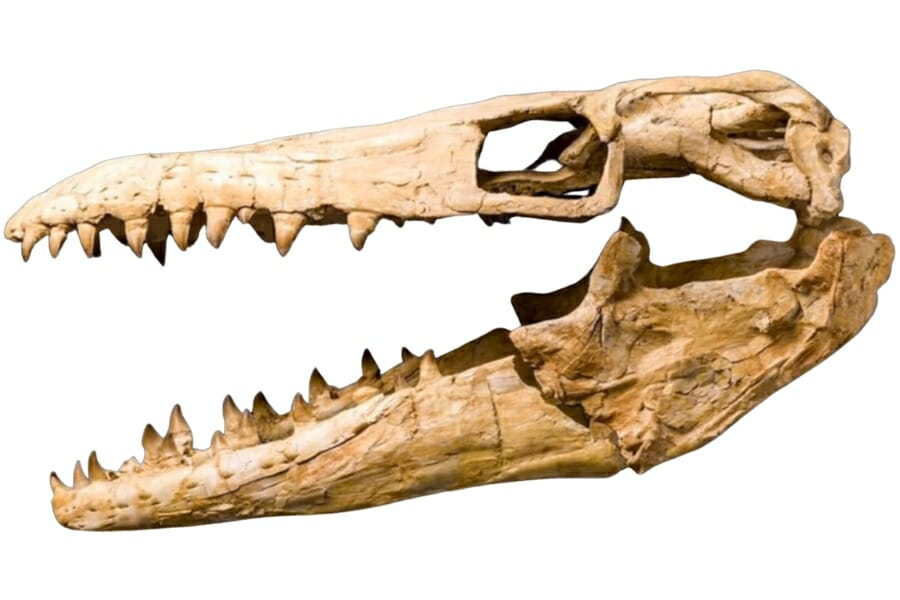How cool is it to think that long, long ago, amazing creatures roamed our planet? Every time you find a fossil, you’re holding a piece of history in your hands! But let’s get real for a moment, finding fossils in Texas isn’t always a walk in the park.
Even though they are scattered everywhere, it can be tough to find them without some guidance and know-how. We will show you some of the best places to find Texas fossils in several different parts of the state.
Luckily, Texas has a rich history buried beneath its soil. From giant dinosaur bones to tiny shells, there’s a world of wonders just below our feet. Suffice it to say, the fossils of Texas are actually abundant!
So, if you’re ready for the adventure of a lifetime, we’ll guide you through Texas’ amazing fossil world. Let’s begin!
The Fossils Of Texas You Can Find
If you’re itching to find ancient natural treasures, Texas is like a fossil wonderland. Our state has a bunch of awesome spots where any budding fossil hunter can strike it rich.
You might think since Texas has many great rockhounding spots, all of them might also contain fossils, but that is incorrect. There are specific spots where these natural wonders hide in our state. But before we proceed to share them with you, let’s first go through the different rare and common fossils in Texas.
- The extensive local experience and understanding of our team
- Input from multiple local fossil hunters and fossil groups
- The accessibility of the various locations
- Safety and potential hazards when collecting
- Private and public locations
- A desire to include locations for both experienced fossil lovers and those who are just starting out
Using these weights we think we’ve put together the best list out there for those who love finding great new fossils for our collections!
Common Texas Fossils
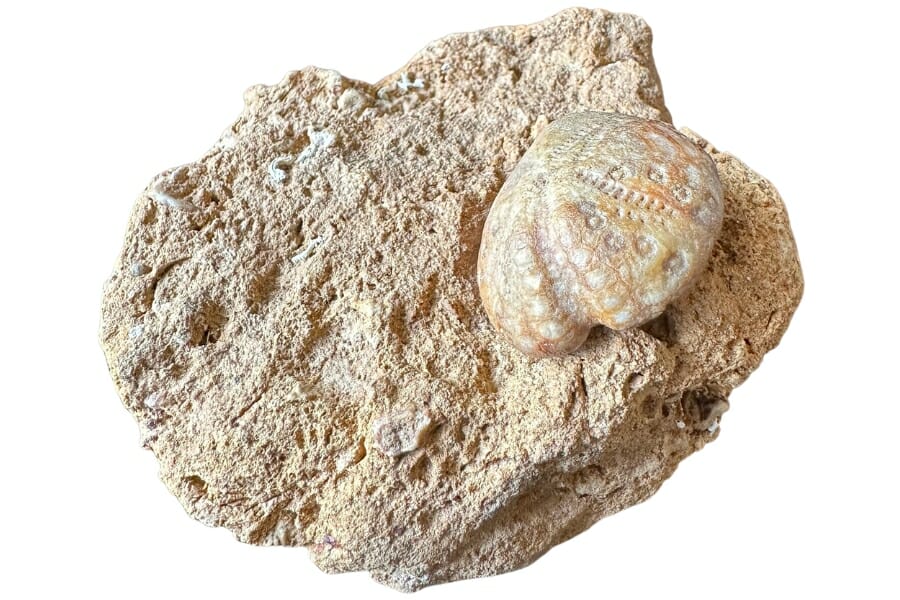
Some of the most common Texas fossils are the following:
- Crinoids
- Ammonites
- Trilobites
- Brachiopods
- Echinoids
- Corals
- Shark teeth
Texas State Fossil – Paluxysaurus jonesi
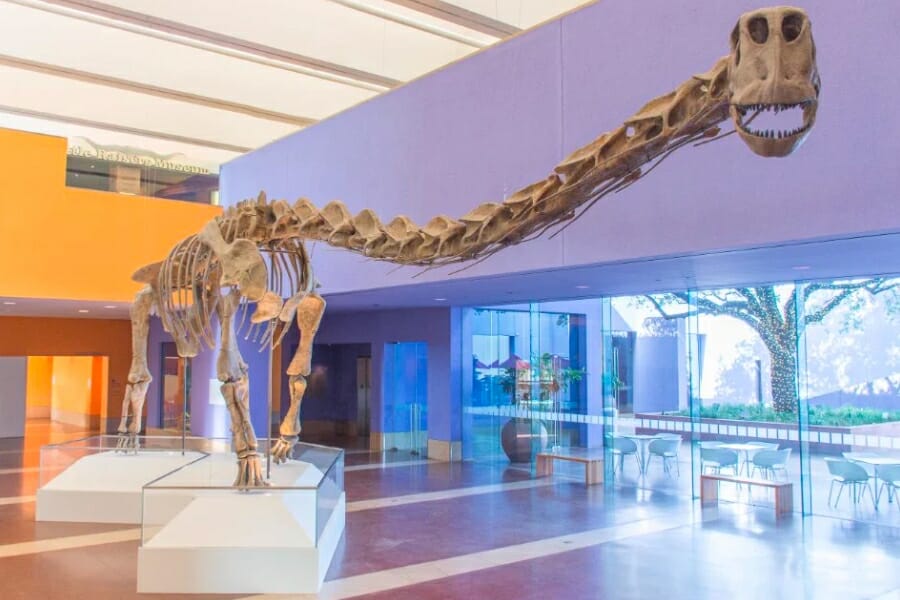
The Paluxysaurus jonesi was a long-necked, plant-eating dinosaur that once roamed Texas. Imagine a creature as long as three school buses put together— that’s about how big it was! With its long neck, it could munch on treetops that other dinosaurs couldn’t reach, making it a king of the herbivores.
What makes the Paluxysaurus jonesi really special is that it’s the official state fossil of Texas. Its name, “Paluxysaurus,” comes from the Paluxy River, where its fossils were found. It lived around 112 million years ago, during the Early Cretaceous period, when Texas looked very different than it does today.
Rare Texas Fossils
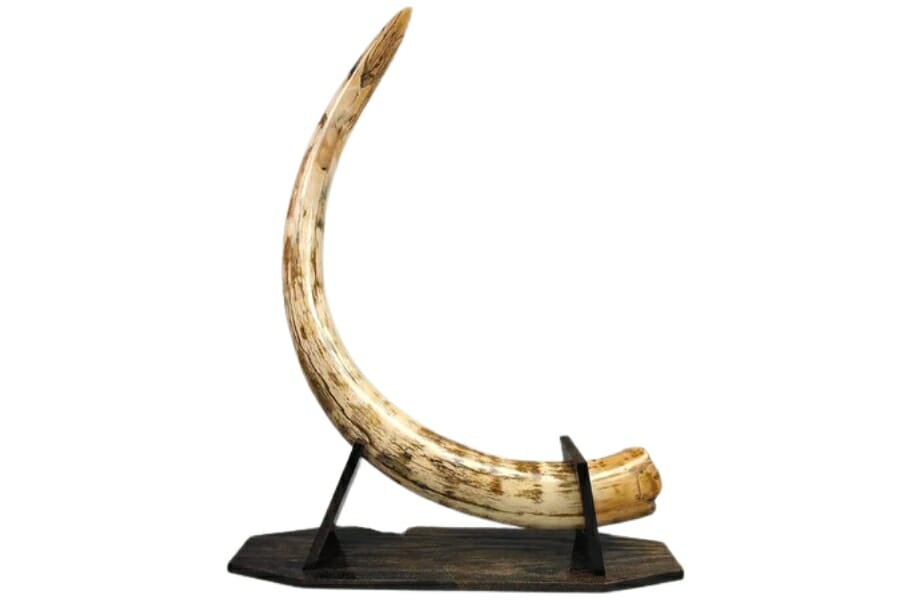
Not only is our state endowed with common finds, but we also boast of having valuable rare Texas fossils. By getting to know the rare Texas fossils, you have a chance to research what they look like before your actual fossil hunting here:
- Mammoth Tusks
- Mastodon Tusks
- Mosasaur
- Exogyra
- Steinkern
The Best Places To Find Fossils In Texas
While finding fossils in Texas is challenging, it’s not impossible because of the many prime areas where you can find them. Below are some of the best ones that you can explore for both common and rare Texas fossils:
Always Confirm Access and Collection Rules!
Before heading out to any of the locations on our list you need to confirm access requirements and collection rules for both public and private locations directly with the location. We haven’t personally verified every location and the access requirements and collection rules often change without notice.
Many of the locations we mention will not allow collecting but are still great places for those who love to find beautiful rocks and minerals in the wild without keeping them. We also can’t guarantee you will find anything in these locations since they are constantly changing.
Always get updated information directly from the source ahead of time to ensure responsible rockhounding. If you want even more current options it’s always a good idea to contact local rock and mineral clubs and groups
Waco Mammoth National Monument
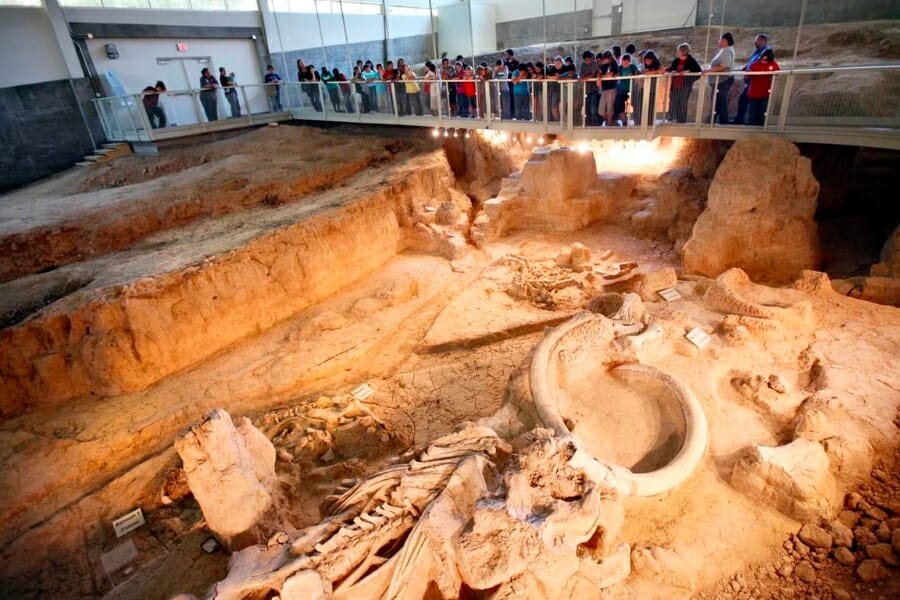
Nestled near the city of Waco, Waco Mammoth National Monument is like a time capsule from the Ice Age. It’s home to some of the most incredible mammoth fossils ever discovered.
Over 65,000 years ago, a group of mammoths— the massive, long-tusked relatives of modern elephants— lived right here in Texas. And the Waco Mammoth National Monument preserves their fossils. The site showcases a herd of mammoths that died together in what scientists believe is a massive flood that trapped them.
If you’re thinking of visiting here, you’re in for a treat! This place is easy to get to as it’s located just a short drive from downtown Waco. Once you’re here, you can walk on paved pathways and view the fossil digs.
Where and what fossils to find in Waco Mammoth National Monument
You can find amazing fossils of the Columbian mammoth (Mamothus columbi) if you explore the Waco Mammoth National Monument. This place also contains fossils of saber-toothed cat, American alligator, giant tortoise, dwarf antelope, and western camel.
DON'T MISS OUT ON ANY GREAT FINDS!
While you're out searching for Fossils you're going to find A LOT of other interesting rocks and minerals along the way. The last thing you want to do is toss out something really interesting or valuable. It can be easy to misidentify things without a little guidance.
We've put together a fantastic field guide that makes identifying 140 of the most interesting and valuable rocks and minerals you will find REALLY EASY. It's simple to use, really durable, and will allow you to identify just about any rock and mineral you come across. Make sure you bring it along on your hunt!
Mineral Wells Fossil Park
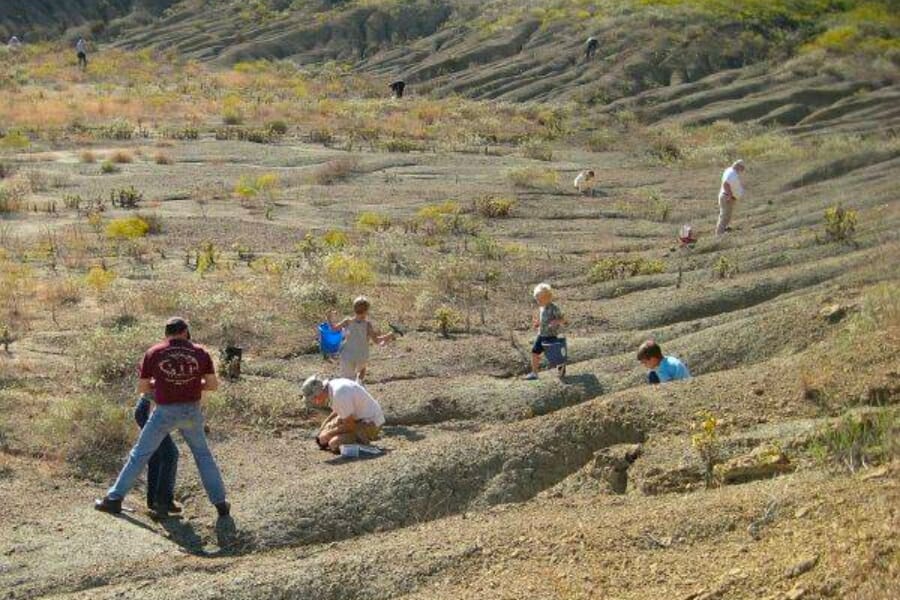
Mineral Wells Fossil Park is like a hidden treasure chest for fossil enthusiasts. What was once an operational gravel pit has transformed into a fascinating window into prehistoric times because of its bountiful fossils.
One of the standout features of this prime area is the pale-colored mudstone, which is rich with fossils from around 300 million years ago. With just a bit of digging and brushing, you can uncover remnants of ancient sea creatures! And the best part is that you’re allowed to take home any fossils you find.
If you want to go here, it’s conveniently located just a few minutes off U.S. Highway 180 West. No wonder it’s a popular spot for families, school groups, and anyone with a curious mind. The park is free to enter, but remember to bring your own tools.
Where and what fossils to find in Mineral Wells Fossil Park
The park is best known for its Pennsylvanian Period fossils, which include the likes of shark teeth, brachiopods, and even occasional trilobites. It also has crinoids, Chonetina fossils, a variety of coral fossils, pelecypods, and bryozoans.
Ladonia Fossil Park
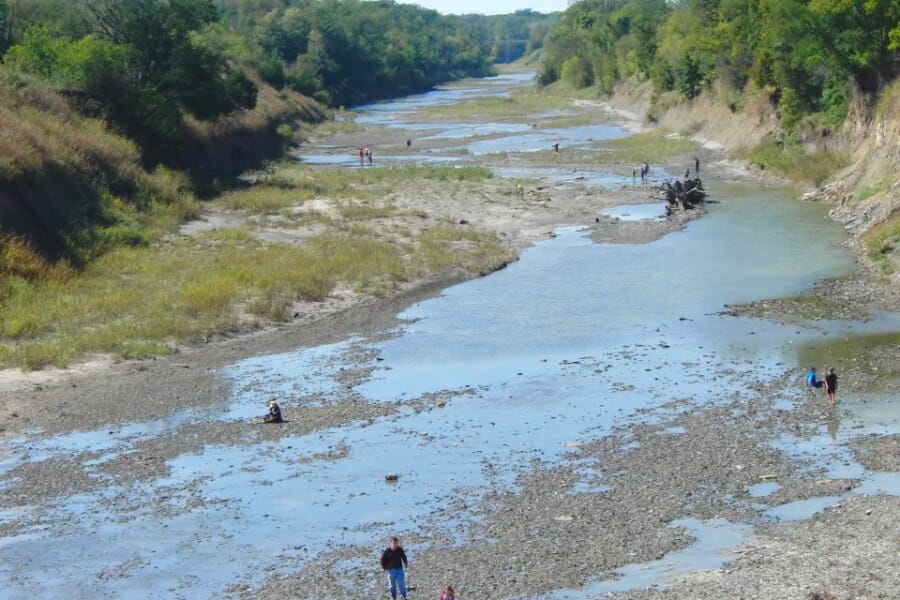
Ladonia Fossil Park offers a unique glimpse into a world millions of years old. As the waters of the North Sulphur River flow, they reveal secrets from ages past, making the park a hot spot for fossil enthusiasts.
The riverbed here is special because it’s a mix of different geologic ages. From ancient shark teeth to the remnants of prehistoric sea creatures, the finds here are diverse and thrilling.
Some lucky explorers have even stumbled upon mosasaur teeth and fossilized turtle shells!
If you’re wondering how to get to this fossil heaven, it’s simpler than you might think. Located just off Highway 34, Ladonia Fossil Park has clear signage leading the way. The park itself is family-friendly and free for all. Once you arrive, a short trail will lead you directly to the riverbed.
Where and what fossils to find in Ladonia Fossil Park
When you visit here, you can find astounding fossils of mosasaur, mammoth, and mastodon tusks, coprolites, exogyra, gastropods, pelecypods, echinoids, and ammonites. It also has fossil evidence of horses, bison, llamas, ground sloths, camels, and woodland musk oxs.
Dinosaur Valley State Park
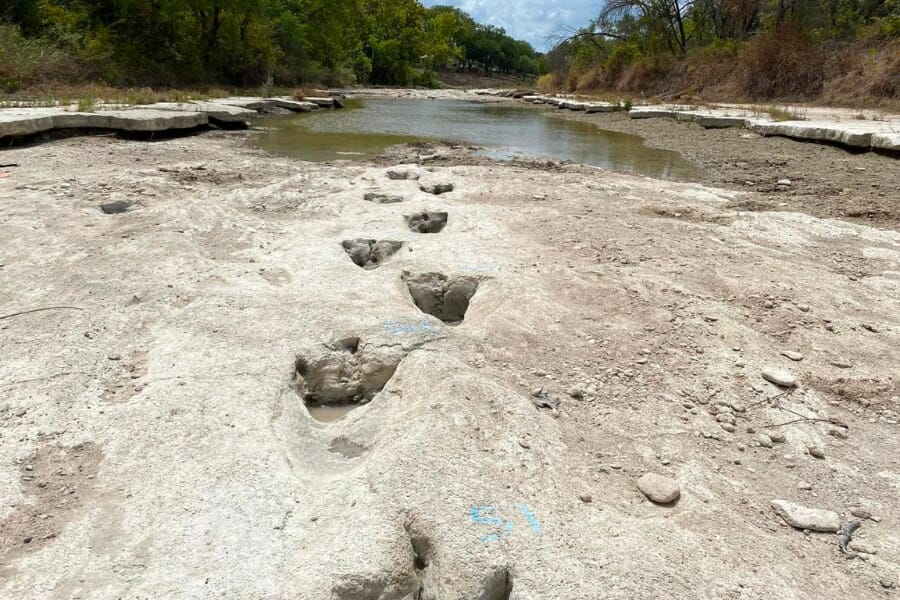
Nestled near Glen Rose, the Dinosaur Valley State Park is a window to a time when giant dinosaurs roamed the Earth. As you step into the park, you’re stepping into the footprints of creatures from a time long, long ago.
The star attractions here are the real dinosaur tracks preserved in the riverbed. These tracks were left behind by the mighty Tyrannosaurus Rex and the gentle, long-necked Sauroposeidon.
Getting to Dinosaur Valley State Park is a breeze. It’s located just about an hour southwest of Fort Worth. Once you reach it, there are clear signs and pathways that lead you to the main fossil areas.
The park does have an entrance fee, but the experience is worth every penny!
Where and what fossils to find in Dinosaur Valley State Park
You can find trace fossils of dinosaur tracks in the riverbed of this park. It’s simply mind-blowing to stand next to these footprints and imagine the colossal creatures that left them.
Fluvanna Roadcut
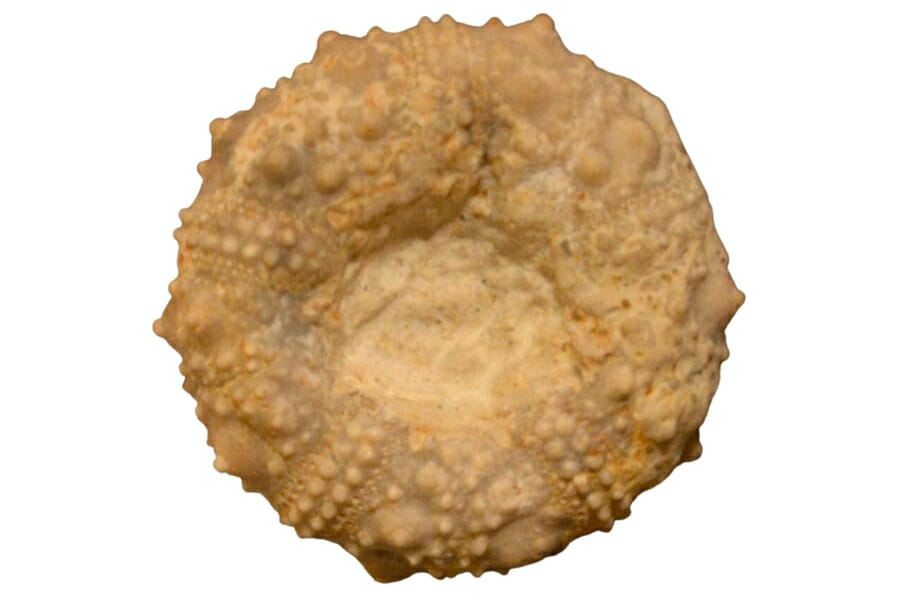
Fluvanna roadcut isn’t as famous as some other fossil hotspots, but that’s part of its charm. It’s a hidden gem for those who have a keen interest in uncovering fossils.
The rocks here are rich in marine fossils, especially from the Pennsylvanian period, which means they’re over 300 million years old. The thrill of chipping away at these rocks and discovering a piece of history is unmatched.
If you want to explore the Fluvanna roadcut, it’s situated near the town of Fluvanna, in the western part of our state. If you’re familiar with the area, it’s off Highway 180. The roadcut itself is evident as a massive exposed rock face along the road.
Where and what fossils to find in Fluvanna Roadcut
You can find a plethora of ancient marine life here, such as echinoids, oyster fossils, and steinkerns.
Other Top Places To Find Texas Fossils By Region
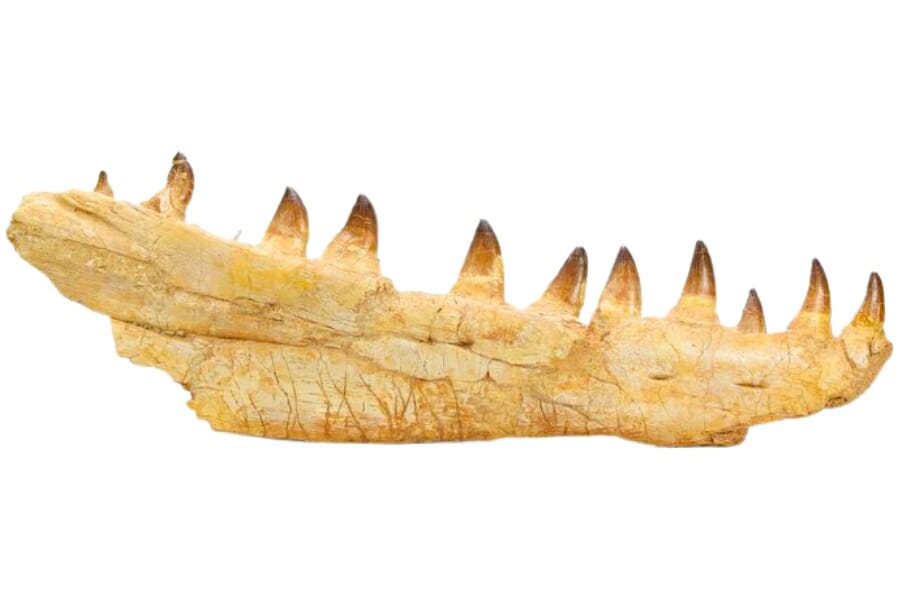
Aside from the first few spots where you can find fossils in Texas, you can also visit other prime fossil-bearing areas here. Below are the best ones that you can explore if you want more options:
| Location | Fossils |
| Sawin’s Quarry in bonebed in Archer County | Archeria, Diadectes, Dimetrodon, Eryops, Parioyx, Pantylus, Trematops, Zatrachys |
| Pasture on the west side of Dundee-Atwood Road in Archer County | Diadectes, Dimetrodon, Eryops |
| Upstream and downstream in Hondo Creek in Bandera County | Ammonites, Bivalves, Corals, Sponges, Forams, Dinosaur bones |
| Coffee Creek Bone Bed in Baylor County | Captorhinus, Dimetrodon, Diplocaulus, Edaphosaurus, Labidosaurus, Lysorophus, Trimerorhachis, Zatrachys |
| Cook Mountain formations in Brazos County | Scaphopods, Mollusks, Worms, Ostracods, Forams, Bryozoa, Corals, Teeth, Bones, Scales, Dermal plates |
| Area exposures of Big Bend in Brewster County | Ornithischian dinosaur bone fragments |
| North on Moran Road near cattle tank in Callahan County | Delocrinus |
| East along old Brownwood-Coleman road in Coleman County | Crinoids |
| Medart Ranch in South Purmela area in Coryell County | Ammonites, Echinoids, Gastropods, Gryphae |
| East bank of Blanco River between Spur and Crosbyton in Crosby County | Desmatosuchus |
| Guadeloupe Mountains in Culberson County | Pelecypod-Streblopteria |
| Railroad bridge on Elm Fork of Trinity River on North Bank in Dallas County | Decapods, Fish Bones, Baculites, Scaphites, Worthoceras, Gastropods, Echinoids |
| Edge of Spade Flats Farm aka East Hill Quarry in Donley County | Bird bones, Alligator, Geochelone, Gopherus |
| Roadcut on northeast side of Randolph Jr College Campus in Eastland County | Crinoids |
| Both sides of US-287 in Midlothian in Ellis County | Shark teeth |
| Creek at the north and south of the US-287 in Ellis County | Decidious leaves |
| South of Post at Patricia Site in Garza County | Phytosaurs, Plants |
| 900 meters east near Tornillo Creek in Hardin County | Turtle shell |
| North of Red Deer Creek in Hemphill County | Hipparion, Paracamelus, Stegomastodon |
| Southwest of bridge and 400 meters east of Kickapoo Falls in Hood County | Sciadiocrinus, Paradelocrinus |
| Southeast of Signal Peak in Howard County | Trilophosaurus bones |
| East on Jacksboro-Graham highway in Jack County | Crinoid plates, brachiopods |
| South side of Llano River on river access road in Kimble County | Paradelocrinus |
| Sulphur River in Lamar County | Shark teeth, Plesiosaur bones |
| Eastward along SR-97 to the McMullin County border in La Salle County | Fern buds |
| North side of the Rio Grande to Loredo in Maverick County | Corals |
| Near spillway at Shropshire Lake in McCulloch County | Crinoids |
| Along Seco Creek in Medina County | Echinoids, Ammonites |
| South side of Wolf Creek in Ochiltree County | Turtle |
| Area exposures of McKenzie Mountain in Palo Pinto County | Pelecypods |
| WPA quarry on Herring Ranch in Potter County | Buettneria, Eupelor |
| East bluff of Sierra Alta Creek in Presidio County | Cibolocrinus, Apographiocrinus, Spaniocrinus, Erisocrinus |
| Area quarries in San Saba County | Crinoids (good quality) |
| C.B. Lambert property in San Saba County | Crinoids (excellent quality) |
| Northeast corner of the junction of SR-183 and West Freeway in Tarrant County | Vertebrate and invertebrate |
| Barton Creek in Cedar Valley area in Travis County | Marine fossils |
| Northeast shoreline of Lake Bridgeport in Bridgeport area in Wise County | Invertebrates, Crinoids (good quality), Trilobites |
Common Questions About Fossil Hunting In Texas
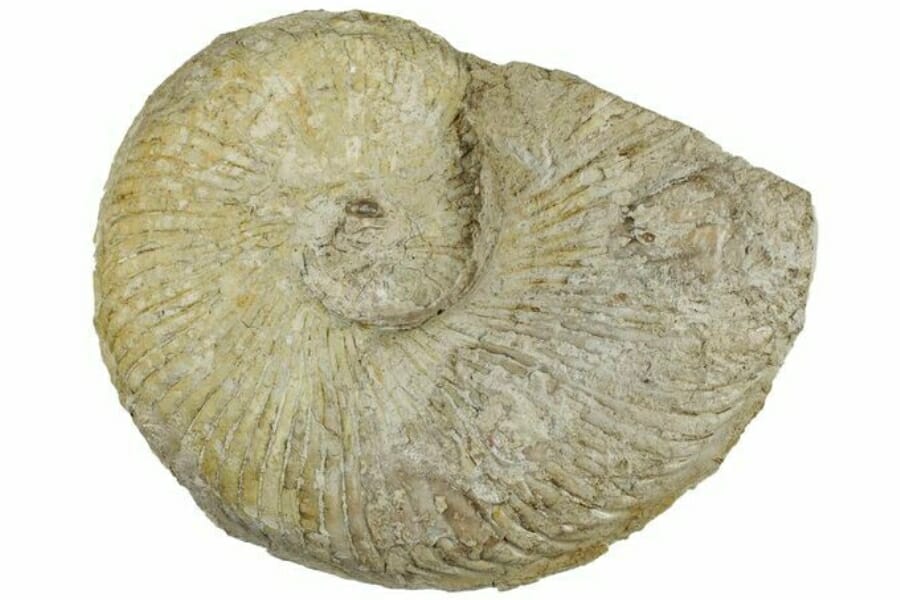
Below are some of the most common questions when it comes to fossil hunting in Texas. We’ll cover them one by one, in case you have the same queries in mind:
Can you find megalodon teeth or shark teeth in Texas?
You can absolutely find both megalodon teeth and shark teeth in Texas! While the massive megalodon teeth might be a rarer find in our state, shark teeth can definitely be found here.
Your best bet to find megalodon teeth here would be in areas that were historically under the ocean, such as parts of East Texas. However, the chances are slim compared to other locations like the eastern coast of the United States.
Meanwhile, shark teeth can be found in areas where these ancient seabeds are now exposed. Locations in central Texas, especially around the Dallas-Fort Worth area like the Eagle Ford and Austin Chalk formations, are good places to find them. Some of the prime areas we’ve shared above also contain shark teeth.
Is it illegal to collect fossils in Texas?
It’s legal to collect fossils in designated collecting areas in Texas. However, it’s crucial to remember that collecting is strictly forbidden in our state parks.
Before you start your exploration, make sure to check out the official website of the Texas Parks and Wildlife Department (TPWD) to review our local collecting guidelines.
Can you find dinosaur bones in Texas?
Lucky for you, you can definitely find dinosaur bones in Texas! Over the years, many significant dinosaur discoveries have been made in our state, and many areas continue to be productive sites for finding dinosaur fossils.
For more information on where specifically you can find them, refer to the different prime areas that we’ve discussed and shared above.
Our Favorite Places To Buy Fossils In Texas
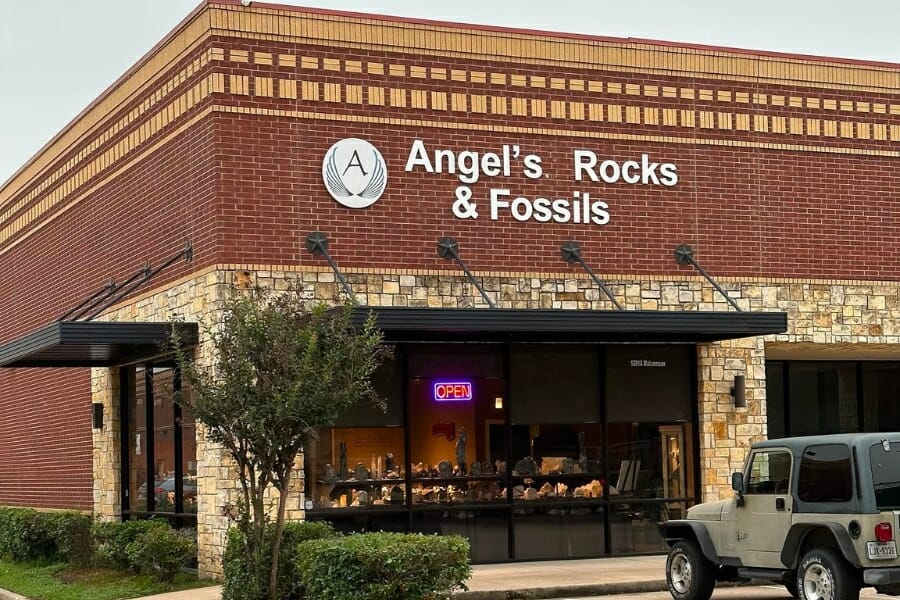
Another great way to see for yourself, and perhaps take home, a stunning array of fossils is to visit reputable fossil shops in Texas. Here are some of the best ones that we found for you:
- Angel’s Rocks and Fossils – 12918 Malcomson Rd, Houston, TX 77070
- Fossil Galaxy – 2208 Postoffice St, Galveston, TX 77550
- Nature’s Gallery – 1102 Elm St Ste 102, Carrollton, TX 75006
- Natural Selections – 1707 Hunter Rd, New Braunfels, TX 78130
- Stone Hut Fossil Shop – 1184 B FM205, Glen Rose, TX 76043

